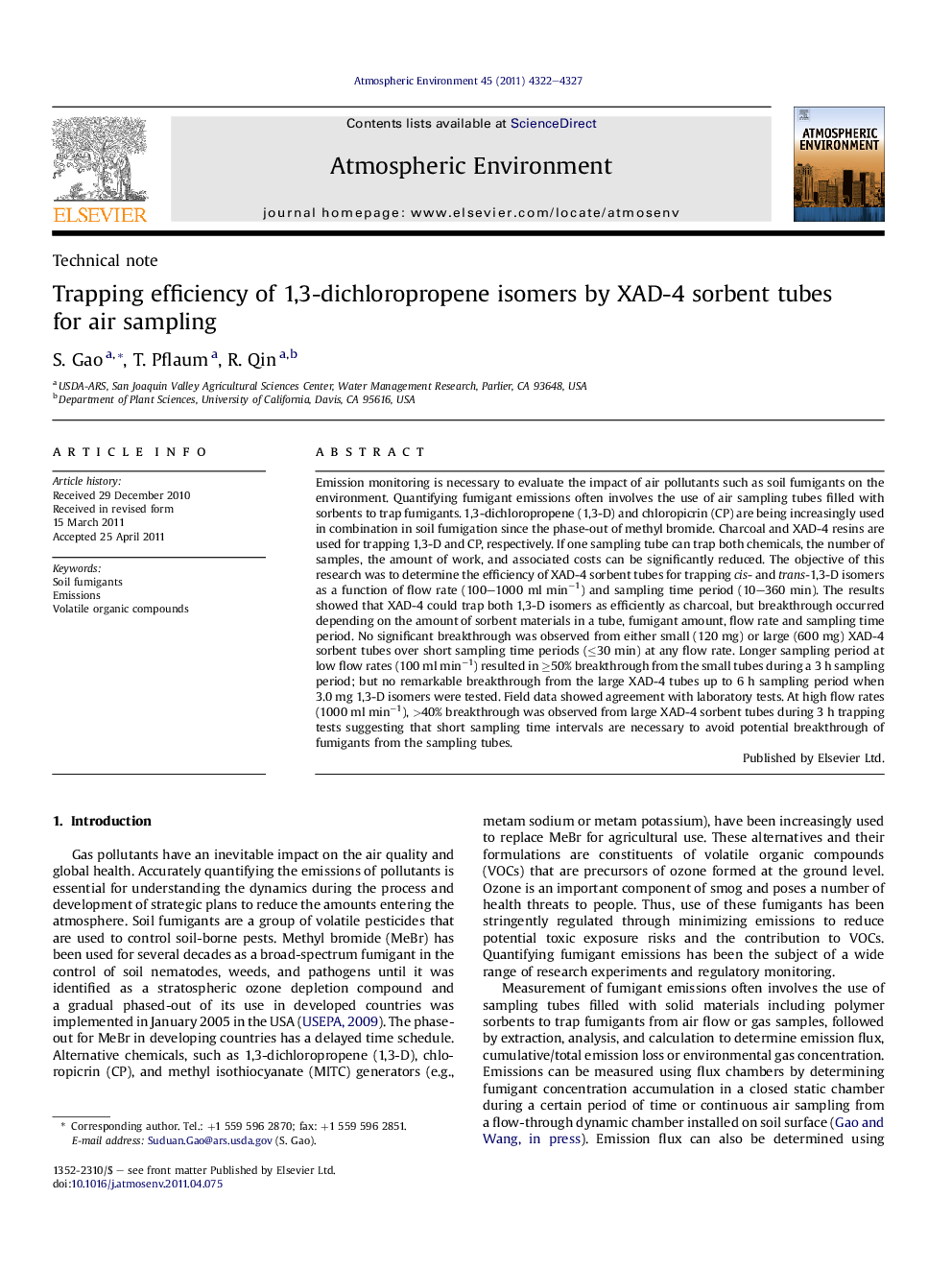| Article ID | Journal | Published Year | Pages | File Type |
|---|---|---|---|---|
| 4439556 | Atmospheric Environment | 2011 | 6 Pages |
Emission monitoring is necessary to evaluate the impact of air pollutants such as soil fumigants on the environment. Quantifying fumigant emissions often involves the use of air sampling tubes filled with sorbents to trap fumigants. 1,3-dichloropropene (1,3-D) and chloropicrin (CP) are being increasingly used in combination in soil fumigation since the phase-out of methyl bromide. Charcoal and XAD-4 resins are used for trapping 1,3-D and CP, respectively. If one sampling tube can trap both chemicals, the number of samples, the amount of work, and associated costs can be significantly reduced. The objective of this research was to determine the efficiency of XAD-4 sorbent tubes for trapping cis- and trans-1,3-D isomers as a function of flow rate (100–1000 ml min−1) and sampling time period (10–360 min). The results showed that XAD-4 could trap both 1,3-D isomers as efficiently as charcoal, but breakthrough occurred depending on the amount of sorbent materials in a tube, fumigant amount, flow rate and sampling time period. No significant breakthrough was observed from either small (120 mg) or large (600 mg) XAD-4 sorbent tubes over short sampling time periods (≤30 min) at any flow rate. Longer sampling period at low flow rates (100 ml min−1) resulted in ≥50% breakthrough from the small tubes during a 3 h sampling period; but no remarkable breakthrough from the large XAD-4 tubes up to 6 h sampling period when 3.0 mg 1,3-D isomers were tested. Field data showed agreement with laboratory tests. At high flow rates (1000 ml min−1), >40% breakthrough was observed from large XAD-4 sorbent tubes during 3 h trapping tests suggesting that short sampling time intervals are necessary to avoid potential breakthrough of fumigants from the sampling tubes.
► One air sampling tube for trapping two chemicals from a fumigant product is desired. ► Effectively trapping chloropicrin, XAD-4 was tested for trapping 1,3-dichloropropene. ► Small tubes recover >90% at any flow rates for short sampling periods (5–30 min). ► Long (3–6 h) sampling at <200 ml min−1 requires large tubes to avoid breakthrough. ► At 1000 ml min-1, long sampling periods show a potential breakthrough in large tubes.
